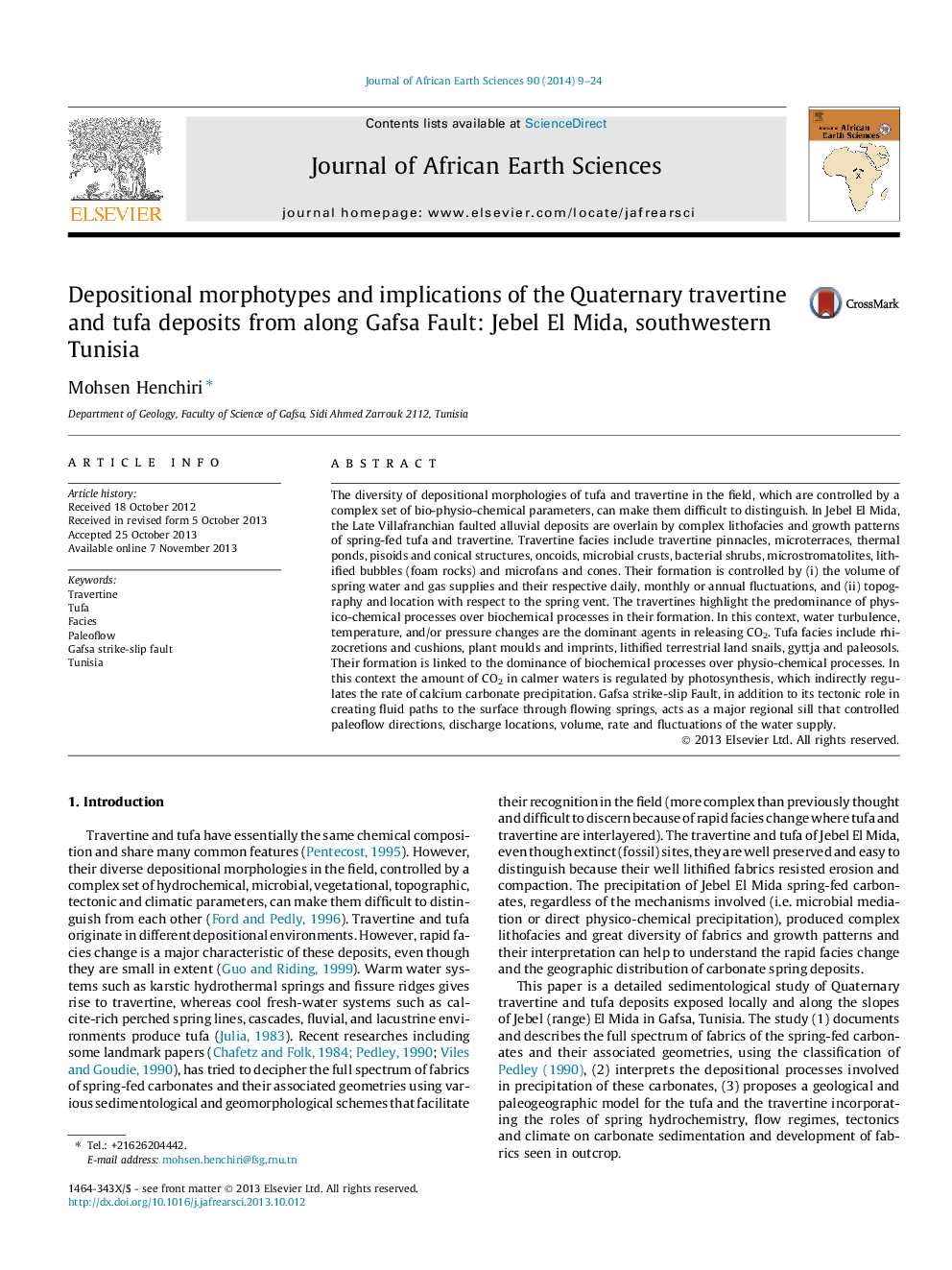| Article ID | Journal | Published Year | Pages | File Type |
|---|---|---|---|---|
| 4728834 | Journal of African Earth Sciences | 2014 | 16 Pages |
•The diversity of tufa and travertine field fabrics gives rise to rapid facies change.•Jbel El Mida travertines and tufas have complex lithofacies and growth patterns.•Physio-chemical and biochemical processes control the travertine and tufa respectively.•Gafsa strike-slip Major Fault plays the role of regional hydraulic sill for the springs.•Karsted limestones of Zebbag Formation supplied the dissolved carbonates.
The diversity of depositional morphologies of tufa and travertine in the field, which are controlled by a complex set of bio-physio-chemical parameters, can make them difficult to distinguish. In Jebel El Mida, the Late Villafranchian faulted alluvial deposits are overlain by complex lithofacies and growth patterns of spring-fed tufa and travertine. Travertine facies include travertine pinnacles, microterraces, thermal ponds, pisoids and conical structures, oncoids, microbial crusts, bacterial shrubs, microstromatolites, lithified bubbles (foam rocks) and microfans and cones. Their formation is controlled by (i) the volume of spring water and gas supplies and their respective daily, monthly or annual fluctuations, and (ii) topography and location with respect to the spring vent. The travertines highlight the predominance of physico-chemical processes over biochemical processes in their formation. In this context, water turbulence, temperature, and/or pressure changes are the dominant agents in releasing CO2. Tufa facies include rhizocretions and cushions, plant moulds and imprints, lithified terrestrial land snails, gyttja and paleosols. Their formation is linked to the dominance of biochemical processes over physio-chemical processes. In this context the amount of CO2 in calmer waters is regulated by photosynthesis, which indirectly regulates the rate of calcium carbonate precipitation. Gafsa strike-slip Fault, in addition to its tectonic role in creating fluid paths to the surface through flowing springs, acts as a major regional sill that controlled paleoflow directions, discharge locations, volume, rate and fluctuations of the water supply.
